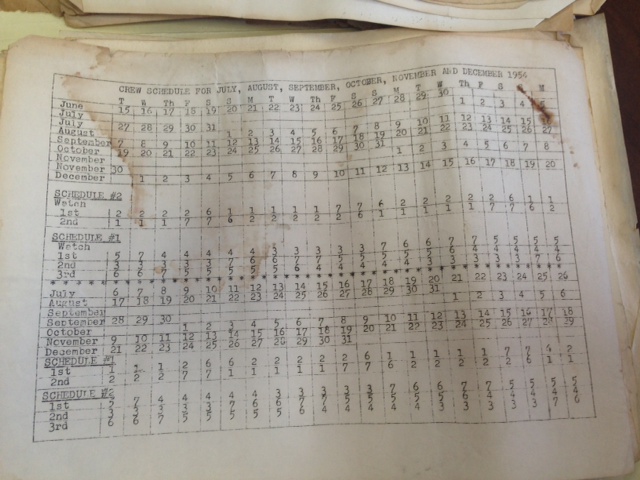The maritime museum itself is set up inside the Berkeley.
There are numerous exhibits on the different areas
of maritime history and fishing in the southern California area.
 |
| Crew Schedule |
What some people might forget is that this boat was a
working ferry at one point in history. She served for 60 years in the San Francisco Bay San Francisco earthquake fire
in 1906. She steamed between Oakland and San Francisco on a normal
basis. The Berkeley was purchased by the museum in
1972.
The archive room sits in the back of the library, full of historical documents about the submarines and boats that are here at
the museum. We are working on replacing some of the notices in the pilot house
of the Berkeley and came across some interesting documents from the steam days of this
boat.
 |
| First Class Ticket |
There are multiple engineer records, passenger logs, and
notices sent out from the Southern Pacific Railroad Company. Each document is a look into the past of this boat.
This is a first class ticket for the ferryboat leaving from San Francisco on July 29, 1958. This happened to be one of the last voyages the ferryboat would make. The cost was $100.
Some of the notices went into detail about accidents that occurred on the ferryboat. One involved a mother and her two children attempting to get off of the boat. The gate was down, but had separated from the boat. She had to drop her belongings into the water in order to catch her children before they fell into the water. Another notice titled "Notice No. 4," came on July 14, 1950: "It is necessary for the captain to report to the United States Coast Guard all cases of person overboard, whether the person's life was saved or not."
 |
| Important information for the time |
In 1955, the ferryboat had been taken out of service to get some work done to the hull. The Southern Pacific Railroad Company sent this notice to the captain before it left Oakland on May 10: "As you know, the boat is back in service after being dry docked and having her hull cleaned and painted. This will make it harder for her to stop quickly. Take notice of this when docking in San Francisco."
These are just a few of the notices from the library archives. For more information about ferryboat Berkeley, visit the museum or check out our website, Maritime Museum of San Diego.
Entry prepared by Leslin Ossoff, Collections Intern.




